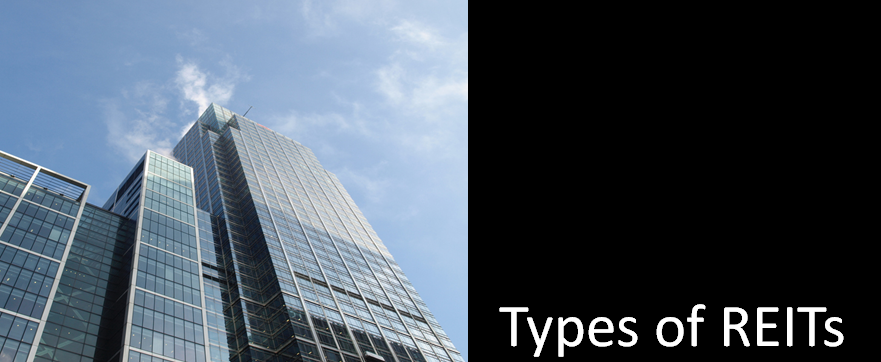A real estate investment trust (REIT) is a security that trades on exchanges like a normal stock, but conducts its business in various aspects of the real estate market. While most REITs focus on owning properties and renting them out to tenants, others work in financing properties and mortgages.
What Is a Real Estate Investment Trust (REIT)?
Real estate investment trusts, or REITs, are companies that focus the majority of operations in real estate. These companies are usually in the business of owning and acquiring properties or acting as landlords. It is beneficial for a company to become a REIT as it results in no income tax obligations on the corporate level. Instead, these taxes are passed on to the individual investors. In return, these companies distribute at least 90% of earnings to shareholders in the form of dividends, resulting in very high yields.
REIT Dividend Tax Rate
A common question that dividend investors have is: are REIT dividends qualified? These dividends are usually not qualified, meaning that they do not qualify for the capital gains rate of 15%. Instead, these dividends are taxed at the investor’s regular income tax rate. For detailed information on REIT taxes, check out The Complete Guide to REIT Taxes.
How to Invest in REITs?
REITs can be purchased through any major broker just like a stock. For a full list of dividend paying REITs, click here. For additional commentary, check out Ameritrade’s guide to REIT investing.
REIT History and Structure
Real estate investment trusts were first created in 1960 by Congress to enable both small and large investors to benefit from commercial real estate profit. The government requires REITs to abide by several regulations, including maintaining 75% of their assets and income in real estate, and having a minimum of 100 shareholders.
In addition, REITs must distribute 90% of their earnings to shareholders through dividends. As a result, the company is exempt from paying income taxes on the profits paid to shareholders. In turn, individual shareholders are then responsible for paying taxes on earned dividends. REITs generally have very high yields and payout ratios since they are required to pay such a large percentage of their profits in the form of dividends. In fact, payout ratio is not a useful metric for evaluating REITs at all. The payout ratio is useful for evaluating other dividend-paying stocks; find out more about it in The Truth About Dividend Payout Ratio.
The first REIT to be listed in the New York Stock Exchange was Continental Mortgage Investors in 1965. Europe was not too far behind, as it passed the first European REIT legislation in 1969.

The two main kinds of REITs are equity and mortgage. Equity REITs focus on property management. Although these firms do finance their properties, they increase income by making acquisitions and managing properties. In contrast to equity REITs, mortgage REITs do not own or manage their properties. They earn their income by investing in real estate loans.
REITs are often categorized depending on the specific type of property that they invest in. Approximately two thirds of REITs are in offices, apartments, shopping centers, malls, and industrial facilities. The remaining REITs own properties such as hotels, health care properties, and self-storage facilities.
Below are the most common types of REITs:
Healthcare REITs
Healthcare REITs own real estate properties such as hospitals, medical centers, nursing facilities, and retirement homes. These REITs depend on factors such as occupancy fees, Medicare and Medicaid reimbursements, and private pay to be successful.
The performance of these companies is directly impacted by the state of the health care system. Below are some of the largest healthcare focused REITs. For a full list of healthcare REITs, click here.
| Symbol | REIT | Market Cap | Location of Properties |
|---|---|---|---|
| HCN | Health Care REIT | $24 Billion | U.S. - Various Cities |
| HCP | HCP | $21 Billion | U.S. - Various Cities |
| VTR | Ventas | $21 Billion | U.S. and U.K. - Various Cities |
| OHI | Omega Healthcare Investors | $4.9 Billion | U.S. - Various Cities |
| SNH | Senior Housing Properties Trust | $4.5 Billion | U.S. - Various Cities |
Office REITs
Office REITs invest in office buildings and earn income from their tenants’ rent. Most tenants in office REITs have long term leases. Investors considering an investment in an office REIT should consider local unemployment rate, the local economy and vacancy rates.
Below are some of the largest office-focused REITs. For a full list of office REITs, click here.
| Symbol | REIT | Market Cap | Location of Properties |
|---|---|---|---|
| BXP | Boston Properties | $20 Billion | U.S. - Boston/New York |
| ARE | Alexandria Real Estate Equities | $6 Billion | U.S. - Various Cities |
| LPT | Liberty Property Trust | $5.3 Billion | U.S.- Various Cities |
| BMR | Biomed Realty Trust | $4.3 Billion | U.S. and U.K - Various Cities |
| PDM | Piedmont Office Realty Trust | $2.9 Billion | U.S. - Various Cities |
Residential REITs
Residential REITs focus on rental apartment buildings and manufactured housing. The biggest residential REITs tend to own properties in high cost regions such as New York or Los Angeles where they are able to charge higher rent.
Below are some of the largest residential-focused REITs. For a full list of residential REITs, click here.
| Symbol | REIT | Market Cap | Location of Properties |
|---|---|---|---|
| EQR | Equity Residential | $25 Billion | U.S. - Various Cities |
| AVB | AvalonBay Communities | $21 Billion | U.S. - Various Cities |
| ESS | Essex Property Trust | $13 Billion | U.S.- California/Washington |
| UDR | UDR Inc. | $7.8 Billion | U.S. - Various Cities |
| CPT | Camden Property Trust | $6.3 Billion | U.S. - Various Cities |
Retail REITs
Retail REITs account for 24% of all REIT investments made in the U.S. These REITs make money from rent from their tenants, so it is important that the retailers are doing well in their businesses so that they are able to pay their rent, and provide regular cash flow for the company.
These REITs own various types of shopping centers including malls, outlets and open-air shopping centers. Since the millennium, the number of malls in the United States has declined. Malls have struggled over the last few years, leaving investors uncertain about retail REITs.The largest retail REITs by number of properties are DDR (DDR) and Simon Property Group (SPG ) .
The Future of Malls
Enclosed malls were once one of the most popular places to shop, but this is changing, and there has not been an enclosed mall built in the U.S. since 2006. With the decline of anchor stores like Macy’s (M ), J.C. Penney (JCP) and Sears (SHLD), malls are dying. As sales in malls have declined, mall-based retailers including KB Toys, Linens and Things, and The Sharper Image have filed for bankruptcy.
Analysts estimate that 10% of malls will be shutting their doors by 2022. Many of these malls have occupancy rates of just 35%-50%. However, the enclosed mall model will not be completely disappearing; higher end malls offering upscale stores have continued to thrive, while the lower end malls are no longer appealing to the lower and middle classes.
Many of the retail REITs that have a large percentage of malls in their portfolio, collapsed during the 2008 recession. Excluding Simon Property Group, many of these REITs have struggled to recover.
Below are some of the largest retail focused REITs. For a full list of retail REITs, click here.
| Symbol | REIT | Market Cap | Location of Properties |
|---|---|---|---|
| SPG | Simon Property Group | $56 Billion | Worldwide |
| GGP | General Growth Properties | $23 Billion | U.S. - Various Cities |
| MAC | Macerich Company | $11 Billion | U.S. - Various Cities |
| O | Realty Income Corp | $10 Billion | U.S. and Puerto Rico - Various Cities |
| KIM | Kimco Realty Corp | $10 Billion | U.S. - Various Cities |

Are REITs a Good Investment?
Many investors invest in REITs for their high yields. Since the companies are mostly tax exempt and are obligated to pay out the vast majority of their earnings in dividends, REIT yields are typically much higher than other types of stocks (averaging about an 8% annual yield for a 15-year investment). REITs also attract investors since their dividends are often secured by ongoing rent and long term leases. Other benefits include simple tax implications, diversification, and the ease of trading on an exchange.
There are a few disadvantages to investing in a REIT, however. One disadvantage is that shareholders are obligated to pay regular income taxes on their dividends. REITs also have high tax obligations themselves due to property taxes, which can be up to 25% of their total operating expenses. Higher property taxes, in turn, can result in a lower cash flow to shareholders.
Like most investments, REITs carry risk. Many investors are attracted to high yield REITs, but those investments can sometimes include the most risk. Unlike other dividend paying companies that pay the same dividend every quarter, mortgage REITs often cut their dividends when there is an increase in interest rates and mortgage defaults. Although the long term returns are typically successful for investors, REITs largely depend on real estate prices. Thus, these investments often go through cycles of boom and bust.
The Bottom Line
REITs are popular instruments for income investors due to their high yields and relatively steady cash flow. As with an investment, these stocks still include a certain degree of risk, and careful research is needed to separate high-quality names from those in decline.
For more information, see our list of high-yield REITs.





